Contents
For a long time, greenhouses were used only for growing seedlings in them, but over time, the growing technology changed, which made it possible to use greenhouses as a place where tomatoes are grown, and not just seedlings for them. It turned out that planting a tomato in a greenhouse is much more profitable than, for example, growing a tomato in the open field. Planting tomato seedlings in a greenhouse should be accompanied by the preparation of the plants themselves and the soil in which they will be placed.
Disembarkation dates
In order not to be mistaken in the time of planting a tomato in a greenhouse, it is better to divide this process into two or three intervals. Planting tomato seedlings in a greenhouse with a glazed coating and additional heating can be carried out as early as the end of April. At the beginning of May, planting can be carried out if there is no heating in the greenhouse, but there is a film cover for plants. 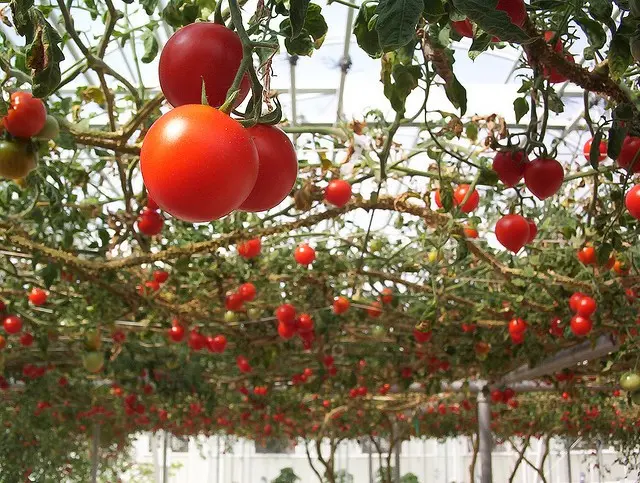
In other cases, tomato planting should take place at the end of May. But you need to take all the precautions before planting tomato seedlings, so that in the event of a sharp change in weather, you do not lose the entire crop. I recommend wrapping the greenhouse with film in several layers at a distance of several centimeters between them – this will help slightly increase the temperature inside the greenhouse and increase the life of its inner layer.
Soil and seedling preparation
Before planting, seedlings should be prepared for the “move”: treated with a mixture to protect against diseases and “hardened”. To do this, you need to leave the windows open day and night, take the seedlings to the balcony on sunny days, cut off 2-3 lower leaves a few days before planting to ensure good survival. Preparation should begin 2-3 weeks before planting seedlings in the greenhouse. You can start by reducing the amount of watering and increasing the ventilation periods.
You can feed the plants with ash (for 10 liters of water – 1 glass of ash). A few days before planting, stop watering completely so that the seedlings do not outgrow, but on the very last day, before planting, the tomato is watered abundantly with water. If buds have already formed on the plants and flowers have opened before planting, you need to treat them with a solution of boric acid (one teaspoon of boric acid should be used per liter of hot water).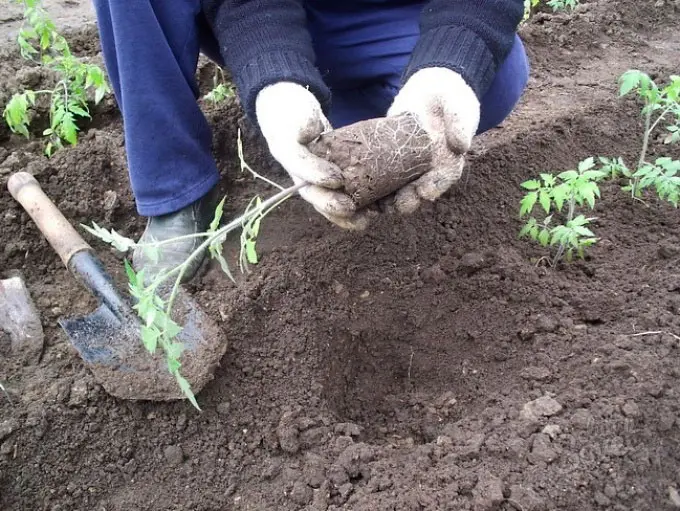
Not only the seedlings must be ready for transplanting, but the greenhouse itself must be prepared. To protect the greenhouse from bad weather, it is recommended to use polycarbonate. The greenhouse should have vents for good ventilation. Before planting, the greenhouse must be removed – 10-12 cm of last year’s soil must be removed, and the rest treated with copper sulphate.
The greenhouse should not be used for planting tomatoes for several years in a row, as this can lead to young plants being affected by old infections that have survived in the soil.
Landing should be carried out on previously prepared soil. The beds for planting need to be prepared in ten days: loosen them, weed out the weeds and place the humus.
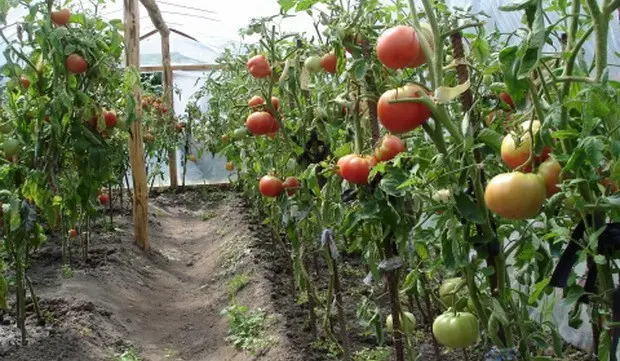
Before planting seedlings, you need to make sure that the soil has warmed up enough and is ready for planting. You can use a regular thermometer for this. It must be placed in the soil for about ten minutes, if after that the thermometer shows that the temperature in the ground is +15, then landing can be carried out on this soil. At a temperature of +8 and below, you should not plant plants in the ground, they simply will not take root, it is worth waiting for a while until the greenhouse and the soil inside warm up.
For planting a tomato, it is better to use a clay or loamy soil mixture. It consists of humus, peat and sawdust. This mixture will ensure the successful growth of your plants. It is also worth treating the soil before planting seedlings in it. To do this, I use a solution of copper sulfate, heated to 100 degrees. It will help protect the tomato from fungal diseases. Before planting, you need to cut off yellow and diseased leaves, and that greenery that, when planted, will be under or on the ground. This procedure should be carried out in the morning, so that by the time you start planting the tomatoes, the places where the sheets have been torn off have already dried up and will not rot in the future.
How to plant
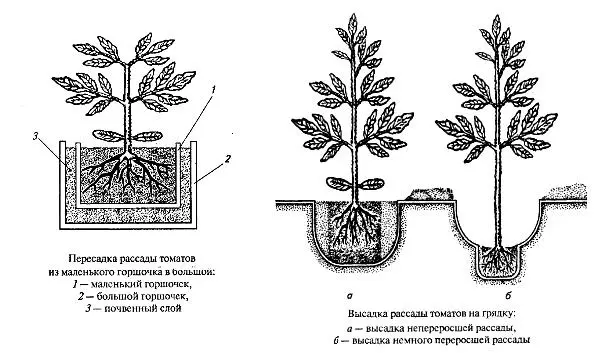
The scheme of planting a tomato in the ground
When you are completely sure that both the soil and the plant itself are ready for planting, you can get down to business. The landing is better to start in the afternoon. Then the air is already filled with coolness, and solar activity gradually decreases. The distance between the tomatoes should be about 50 cm. The plants should be planted in a checkerboard pattern, and a peg should be installed nearby in order to tie the plant to it in the future.
In general, the planting pattern and the distance between plants will depend on their species, but the seating pattern for the joint cultivation of ultra-early, determinant and tall varieties is considered the most optimal. They are planted in two rows. In the first, near the window, determinant plants are planted, in the second – tall ones. Both species form in one stem. Ultra-early plants are planted between them and only one stem is also formed. Thus, while high-speed tomatoes are just growing, ultra-early ones will already yield a crop.
Low-growing early ripening varieties are planted in two rows in a checkerboard pattern at a distance of 35-40 cm. Standard and determinant tomato varieties are planted thicker, but in this case it is worth making sure that the plants do not thicken. Tall varieties are planted in the same way as undersized ones, in a checkerboard pattern, but the distance between them should be greater – 60-70 cm. Planting should be carried out at a depth of about 20-25 cm, because the deeper you plant the plant, the colder it will be.
During planting, you should pay attention to overgrown seedlings. For them, they invented a separate method of planting: you need to make a hole in the soil by 12 cm, in it one more, under the width of the pot with seedlings. It is necessary to plant a pot with a plant in the second hole and sprinkle it with earth, and after the seedlings have taken root, you can fill up the first hole. Thus, the growth of the tomato will not stop and the flowers will not fall off, because new roots will not appear on the overgrown tomato stem.
First time care
It is important to know that after all the plants are planted, they are not recommended to be watered for about two weeks. After that, you need to water in the morning under the root. Thus, water will not get on the fruit. On the third or fourth day after planting, the tomato can already be tied up. The material for this must be chosen so that it cannot damage the stem of the tomato, for example, linear or frame trellises. The greenhouse should be ventilated from time to time, especially during the flowering of tomatoes – this will protect them from waterlogging.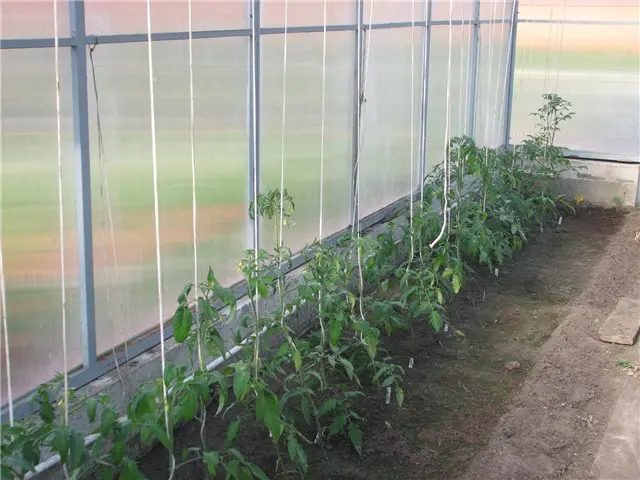
Sometimes it is also worth carrying out root feeding of plants, for example, using liquid mullein, wood ash or superphosphate. But it is worth paying attention to the fact that tomatoes cannot be fertilized with substances that contain a large amount of nitrogen. Fertilizers with high levels of nitrogen can cause leaves to grow instead of fruits. We must not forget to stepson the plants, i.e. break out shoots that grow from the axils of the leaves, because their excessive growth leads to shading of the plant, the spread of diseases and prevents the fruits from ripening.
If you strictly adhere to all the rules for growing tomatoes in a greenhouse, then a rich harvest of tomatoes will not take long.
Video “How to grow tomatoes in a greenhouse”
A record of how to plant tomato seedlings in a greenhouse correctly and in what time, what are the requirements for seedlings and how to properly prepare the soil.









